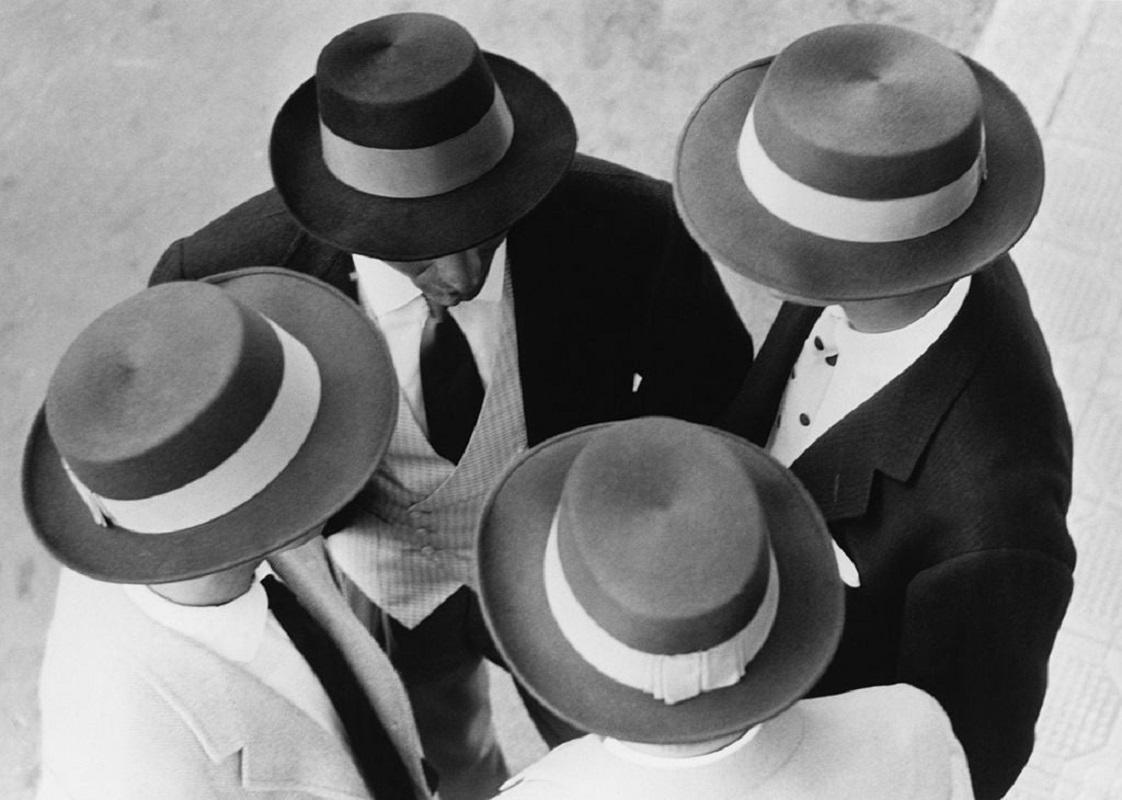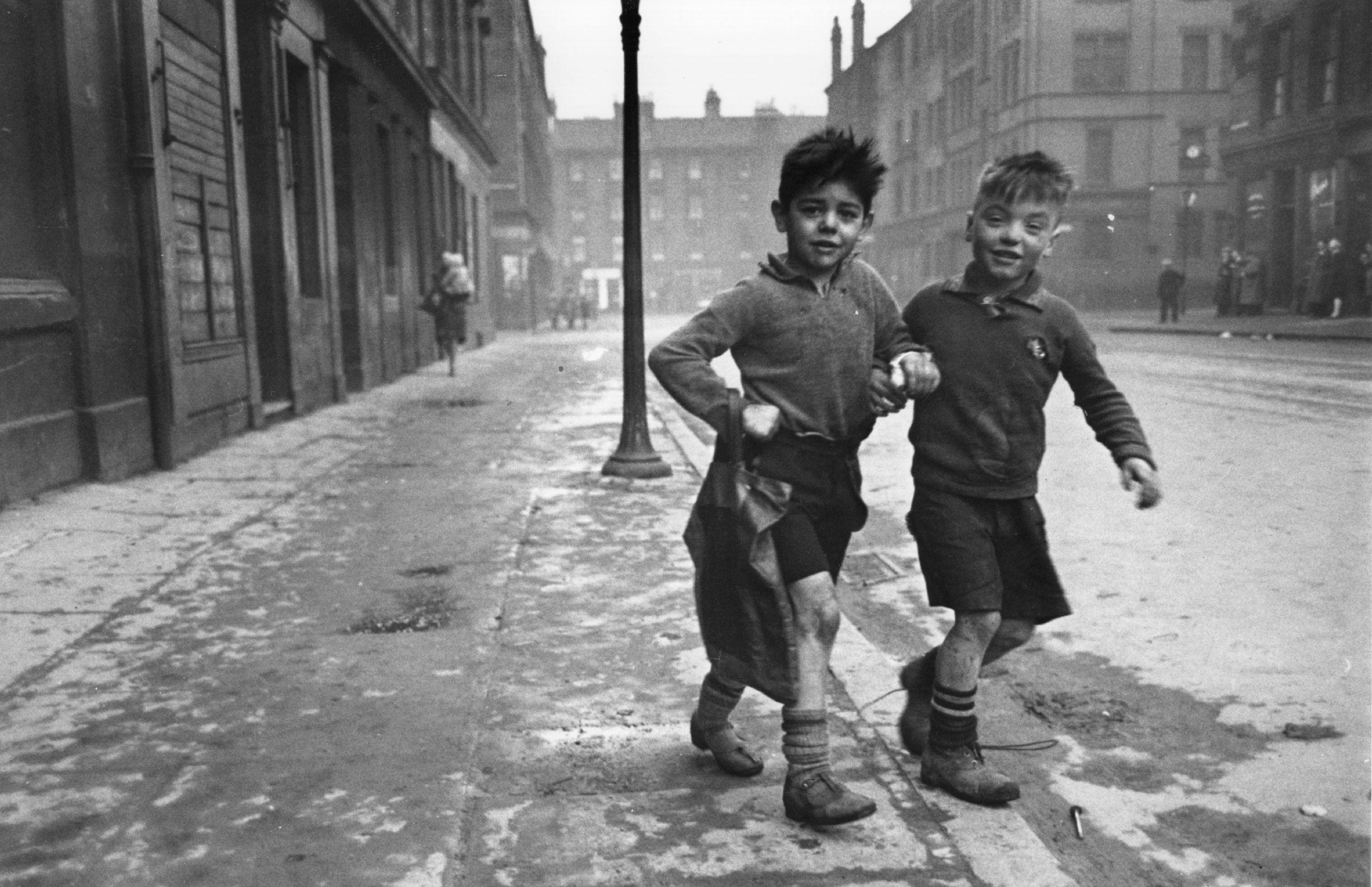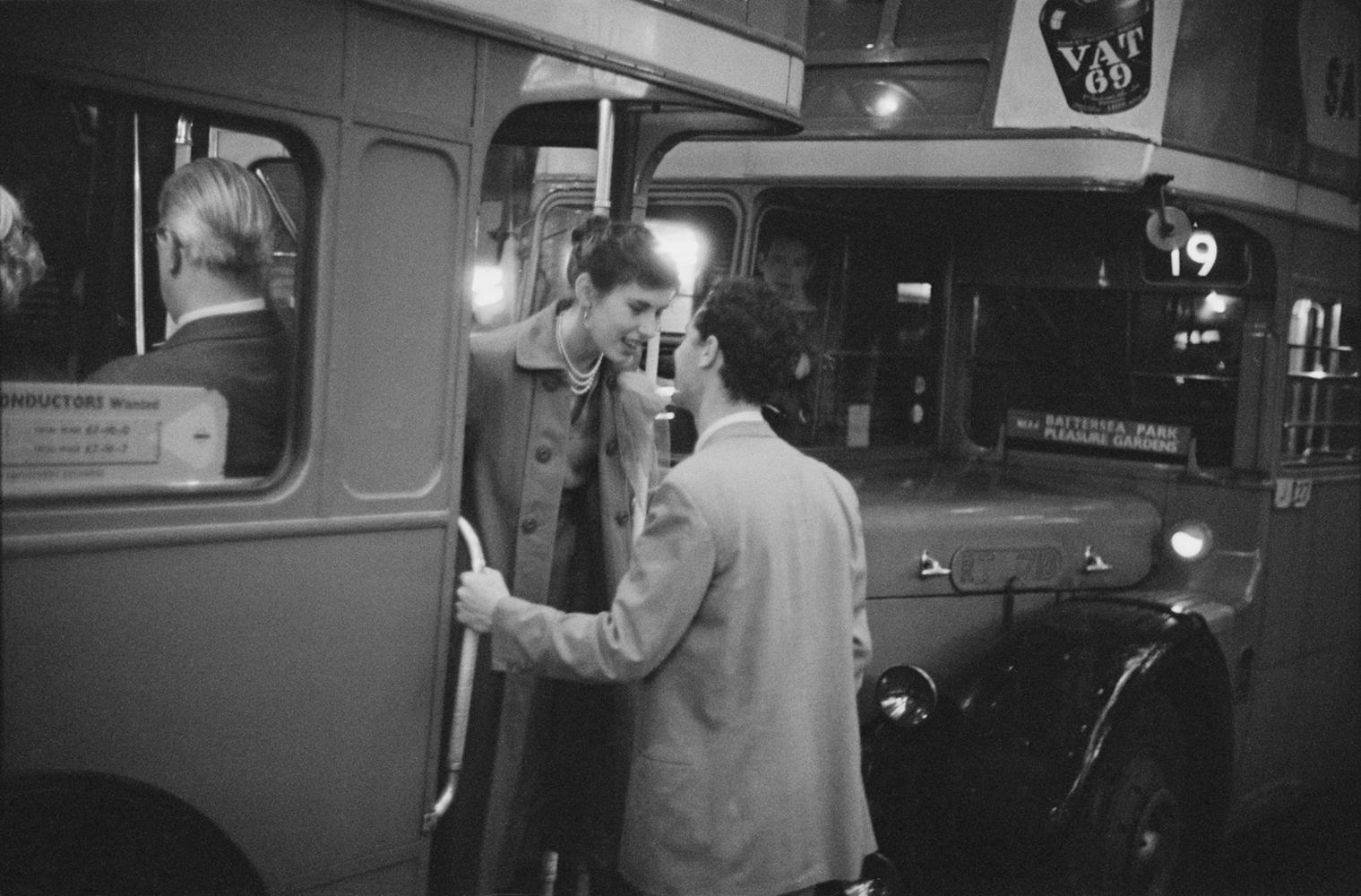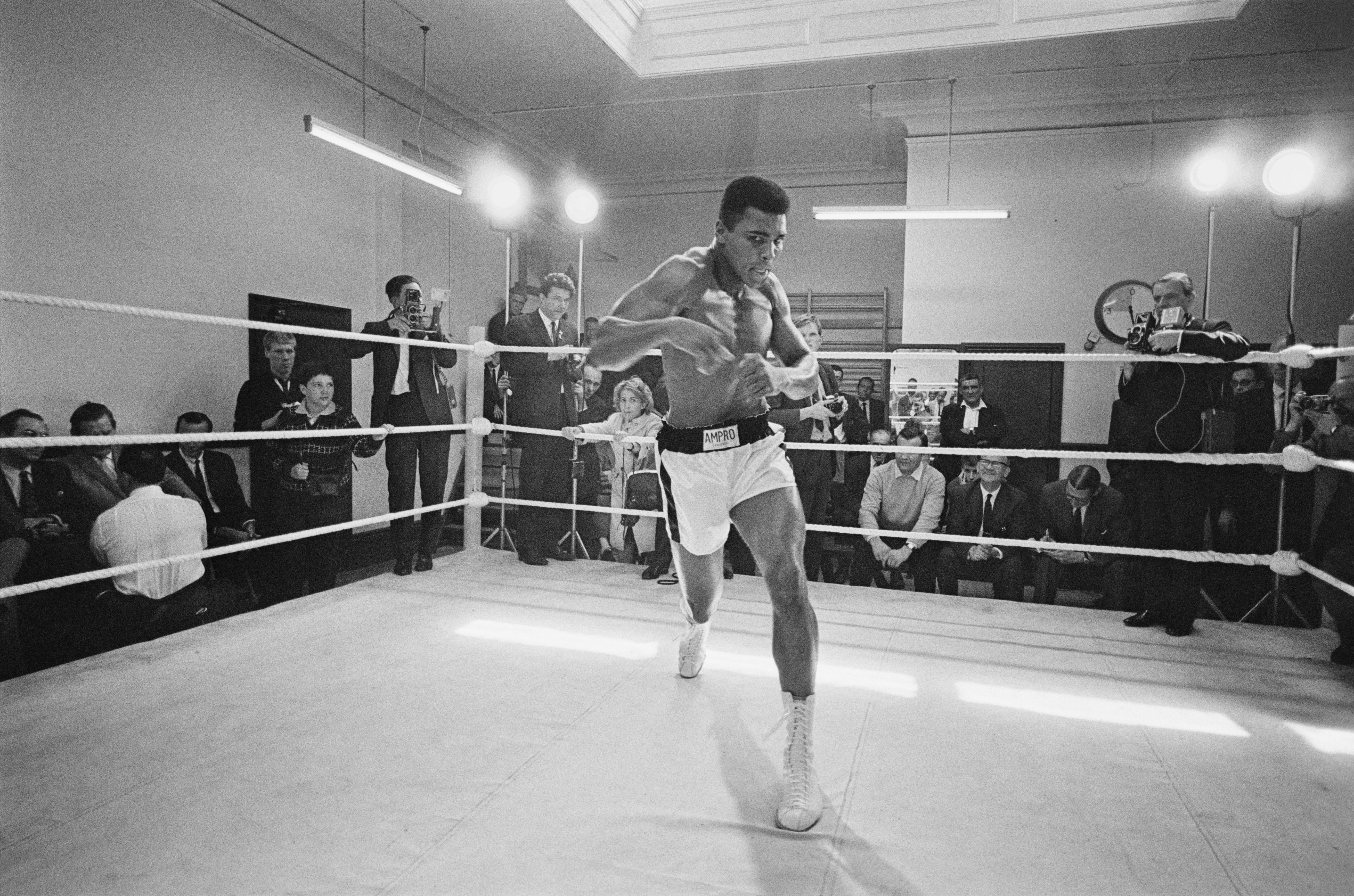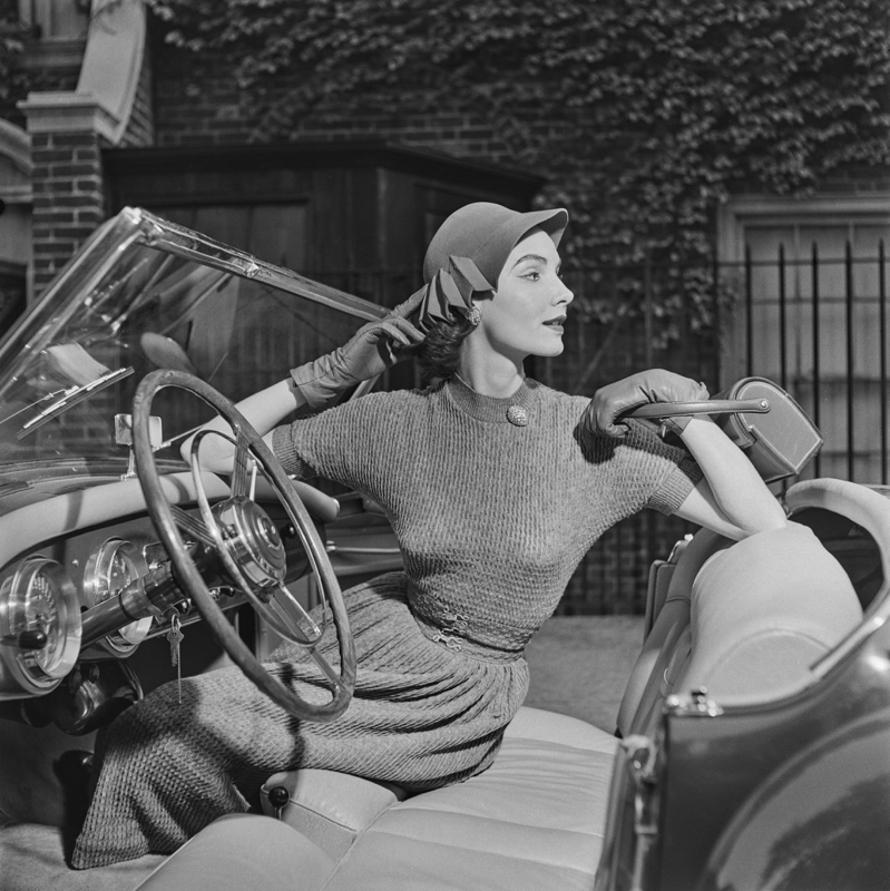Items Similar to Ballerina
Want more images or videos?
Request additional images or videos from the seller
1 of 10
WeegeeBallerinacirca 1950s
circa 1950s
About the Item
Arthur Felling, better known as Weegee (1899-1968) is America's premiere photojournalist and one of the last century's most influential photographers.
He would become famous, beyond New York and news circles, after the publication of his photo books Naked City (1945) and Weegee's People (1946).
Weegee's images of New York City crime, disaster, and tragedy are frequently iconic and highly influential. Less well-known, however, is the work he focused on during the last twenty years of his life: known as the 'distortions' period.
In the late 1940s, Weegee began experimenting with photographic manipulation both in the darkroom and using an array of filters, many of which were his own invention, on his camera.
Weegee created distortions of a wide range of subjects; celebrities, architecture, circus life, and nudes. Of course, one of the overarching themes of his work was the idea of spectacle.
The striking image features an elegant ballerina, poised en pointe, with her arms delicately arched above her head as she looks forward with a confident gaze. The photograph captures a fleeting moment, while its subtle distortions elongate the ballerina's lithe figure, emphasizing the grace of her technique.
Weegee’s photography can be found in scores of museums and private collections worldwide: the J. Paul Getty Museum, Los Angeles; Museum of Modern Art, New York; San Francisco Museum of Modern Art; Museum of Modern Art, Oxford; Museum of Contemporary Art, Los Angeles; International Center of Photography, New York and more.
Questions about this piece? Contact us. Visit our Toronto gallery on Thursdays or by appointment.
Untitled "Ballerina"
USA, c. 1950
Gelatin silver print
9"H 6.5"W (work)
20.25"H 16.25"W (framed)
Stamped verso
Very good condition
- Creator:Weegee (1899-1968, American)
- Creation Year:circa 1950s
- Dimensions:Height: 9 in (22.86 cm)Width: 6.5 in (16.51 cm)
- Medium:
- Movement & Style:
- Period:
- Condition:Very good condition.
- Gallery Location:Toronto, CA
- Reference Number:
Weegee
Arthur Fellig, who later assumed the pseudonym Weegee, was a photographer and photojournalist, best known for his gritty black-and-white imagery taken on the streets of New York City. Born in 1899 in what is now the Ukraine, he arrived in the United States with his family in 1909, and settled in Brooklyn. After working in a variety of photography-related jobs, he struck out on his own at the age of 35 as a self-taught freelance photographer, selling his work to publications like the Herald Tribune, the Daily News, the Post, and the Sun. Weegee worked mostly at night, usually around Manhattan Police Headquarters. He was the only freelancer in New York to obtain permission to install a police radio in his car. As a result, he was often the first to arrive at the scene of the many crimes he photographed, often before the police themselves had responded. Moreover, he traveled with a makeshift darkroom in the trunk of his car, so he could produce, and then sell, his images faster than his competitors. But crime was not his only subject. He also photographed socialites at high-society events, circus performers, street life, tenement housing conditions, and many other facets of New York life. For a number of years he traveled extensively in Europe, and worked for the London Daily Mirror. He later returned to New York City, where he died in 1968. Th Museum of Modern Art began collecting his work in 1943, and featured it in several exhibitions. His work was also shown at the New York Photo League, and the International Center of Photography hosted a retrospective of his work in 1998. He has been featured in exhibitions at European venues such as the Kunsthalle Vienna, Austria's Flatz Museum, and the Multimedia Art Museum in Moscow. Several monographs of his work have been published.
About the Seller
4.8
Gold Seller
These expertly vetted sellers are highly rated and consistently exceed customer expectations.
Established in 2009
1stDibs seller since 2015
177 sales on 1stDibs
Typical response time: 1 hour
- ShippingRetrieving quote...Ships From: Toronto, Canada
- Return PolicyA return for this item may be initiated within 3 days of delivery.
More From This SellerView All
- GardeniaBy Robert MapplethorpeLocated in Toronto, OntarioRobert Mapplethorpe earned his place in the canon from his incredible output of images that ranged from beautiful to brutal. Mapplethorpe was one of the key artists who helped elevate photography from image-making to fine art. Mapplethorpe (1946-1989) fearlessly depicted the body (his own, friends' and lovers') in a way that positioned his work in line with masters such as Reubens, Courbet and Eadweard Muybridge to mention a few. Despite the sometimes shocking content of his work, Mapplethorpe's photographs possess a formalist quality with their undeniable beauty and strict compositions. From 1978-1981, Mapplethorpe created thirty-nine black and white photographs that make up his acclaimed XYZ Portfolios. While each portfolio is a distinct exploration of Mapplethorpe's signature subject matter, when combined, XYZ Portfolios serves as a definitive and in-depth representation of his mature and most sought-after, period. (Of the portfolios, X explores homosexuality and sadomasochism; Y features floral still life; while Z showcases portraits of Black men) Click here to see a portrait from the Z portfolio. In 2012, the XYZ Portfolios were shown in an exhibition at LACMA and presented in three rows (X on top, followed by Y in the middle, and Z below) as Mapplethorpe had envisioned them in 1989. "Gardenia" is one of thirteen images from the Y Portfolio, featuring a fragrant and graphic flower. Shot overhead, this tranquil image captures a delicate flower subtly floating in a dark, contrasting bowl. Aside from the flower's shadow below, the still water is nearly inconspicuous, contributing to the air of grace and elegance that this piece evokes. While the depiction is straightforward, Mapplethorpe's contrasts lead to a more ambiguous image; is this actually a flower or some alien specimen being examined? This powerful black and white image is a prime example of Mapplethorpe's work, highlighting his studio-centric practice as well as his refined and meticulous printing. This is a rare opportunity to acquire an iconic work by one of the most influential photographers of the 20th Century. Caviar20 is proud to be offering this monumental and important piece. "Gardenia" USA, 1978 Gelatin silver print Signed in ink by Michael Ward Stout and credited and dated on photographer's estate stamp, mount verso. 13.25"H 12.75"W (image) 16.75"H 16"W (framed) Very good condition Provenance: Xavier Hufkens...Category
1970s American Modern Black and White Photography
MaterialsSilver Gelatin
- Weegee "A Trip to Mars"By WeegeeLocated in Toronto, OntarioWhile many first associate Weegee (aka Arthur Fellig) with New York City crime scenes, perhaps a broader and more consistent theme is that of spectacle and/or urban entertainment. The origins of his nick-name and reputation date back to the 1930s when he became the first New York City press photographer to obtain permission to install a police radio in his car. Following the city's first responders and documenting their duties, Weegee had unprecedented access to New York’s fires, crimes, debaucheries and of course, murders. During the first decade of his career these unflinching urban tragedy or crime images paid Weegee's bills, but as he became more financially independent he was more inspired to pursue photographs on his own agenda. While his oeuvre is vast, Weegee was especially drawn to entertainment: nightlife, circuses, the theatre, showgirls, city thrills, the cinema etc. Some of Weegee's most dynamic and tender (and under-appreciated!) images are related to simply having fun (in a crowd). He was not confined to one neighbourhood or demographic. He captured action, faces and events from Coney Island to the Bowery and Greenwich Village, to Times Square and Harlem. In “A Trip To Mars,” Weegee depicts a multi-generational group crowding around a large telescope...Category
1940s American Modern Black and White Photography
MaterialsSilver Gelatin
- Groom Kissing His BrideBy Diane ArbusLocated in Toronto, OntarioDiane Arbus (1923-1971) is one of the most influential and daring photographers of the 20th century. Arbus is best known for her unique form of documentary portraiture. She explored the uncanny, the marginalized, and the idiosyncratic characters who defied mid-century conformity. Her work has influenced some of the most renowned photographers of our time including Nan Goldin. While her career launched in the fashion world, it was years after quitting commercial photography (circa 1956) that she found her voice as an artist. With camera in hand, she followed her fascination with the eccentric individuals and oddities of New York City. Ultimately rejecting her affluent, sheltered upbringing and the mainstream fashion industry to create her own definitions of beauty. Arbus’ portraits were considered incredibly provocative for their bold representations of sexuality, chaos, and grit. She fully immersed herself within the queer and alternative communities she documented, engaged with a curious balance of mystery and homage. Shot in 1966, "Groom Kissing His Bride" is a prime example of her uncanny ability to capture even the most traditional moments (a wedding) through a lens of surrealism. Love and tension confront each other as the groom kisses the bride with an attacking passion. Her likeness disappears behind his embrace and their newlywed bodies merge together. This work also contains Arbus’ visual trademarks – a black and white palette, a square crop, and a hard flash that flattens the aesthetic wonderland of New York. Today, Arbus' work is celebrated in many major museum collections including the Art Gallery of Ontario, Art Institute of Chicago, National Museum of Modern Art (Tokyo), and Centre Pompidou (Paris). "Groom Kissing his Bride, NYC" USA, 1966 Gelatin-silver print Printed by Neil Selkirk Stamped 'A Diane Arbus photograph...Category
1960s American Modern Black and White Photography
MaterialsSilver Gelatin
- Weegee "Distortion: Stripes"By WeegeeLocated in Toronto, OntarioInnovative, provocative, inimitable - these are just a few of the words to describe America's boldest photographer. Arthur Fellig, better known as Weegee (1899-1968) was a ground-breaking, successful (and notorious) photojournalist. His images shot on the streets of New York City are iconic and influential. In the 1930s he became the first New York City press photographer to obtain permission to install a police radio in his car. This allowed him to follow the city's first responders and to document their duties; responding to fire, crime, debauchery and of course, murder. By the early 1940s Weegee was experiencing fatigue with crime reportage. Ironically, this was also the point when he finally began experiencing professional validation and acclaim, to the point of being a minor celebrity. Notably in 1941 he was included in The MoMA's seminal "50 Photographs by 50 Photographers" (curated by Edward Steichen). The museum would also acquire five Weegee photographs...Category
1940s American Modern Black and White Photography
MaterialsSilver Gelatin
- Waterski JumperBy WeegeeLocated in Toronto, OntarioArthur Felling, better known as Weegee (1899-1968) is America's premiere photojournalist and one of the last century's most influential photographers. He would become famous, beyond...Category
1950s American Modern Black and White Photography
MaterialsSilver Gelatin
- Weegee "Sailor and Girl Kissing"By WeegeeLocated in Toronto, OntarioWeegee (1899-1968) was equally fascinated and inspired by cinema and all of its tangents, from Hollywood movie stars to ordinary civilians going to the movies. While Weegee is typically associated with crime/disaster images, the broad theme of "entertainment" is a major component of his oeuvre. An interesting and provocative sub-genre of his cinema-related work are his images of couples (often heavy-petting) in movie theatres. Recent scholarship has established that many of Weegee's supposed clandestine images were actually staged or arranged with friends or co-operative strangers. Nevertheless, Weegee created these photographs in the dark with an array of clever techniques including infrared film, filtered flashbulb and triangular prism lens. Employed in shots such as this one, the prism lens would allow the artist to “see around corners,” useful at times when his subjects were in compromising locations. These images of kissing couples, Weegee wrote in 1959, were “his best seller, year in and year out.” "Sailor and GIrl at the Movies...Category
1940s American Modern Black and White Photography
MaterialsSilver Gelatin
You May Also Like
- Italian Hats by Hulton ArchiveLocated in London, GB"Italian Hats" by Hulton Archive Models wearing a collection of Italian designed hats for winter 1956/7 and spring 1957, at the fifth Men's Fashion Festival, San Remo, Italy. Unfra...Category
1950s Modern Black and White Photography
MaterialsBlack and White, Silver Gelatin
- Bert Hardy Gorbals Boys 1948 - Silver Gelatin Fibre PrintBy Bert HardyLocated in London, GBGorbals Boys (1948) - Silver Gelatin Fibre Print (Photo by Bert Hardy/Getty Images Archive London) Possibly Bert Hardy's most famous image. Two boys in the Gorbals area of Glasgow. The Gorbals tenements were built quickly and cheaply in the 1840s, providing housing for Glasgow's burgeoning population of industrial workers. Conditions were appalling; overcrowding was standard and sewage and water facilities inadequate. The tenements housed about 40,000 people with up to eight family members sharing a single room, 30 residents sharing a toilet and 40 sharing a tap. By the time this photograph was taken 850 tenements had been demolished since 1920. Redevelopment of the area began in the late 1950s and the tenements were replaced with a modern tower block complex in the sixties. Original Publication: Picture Post - 4499 - The Forgotten Gorbals - pub. 1948 Additional Information: Unframed Paper Size: 20 x 16'' inches / 51 x 41 cm Printed 2024 Silver Gelatin Fibre Print Limited edition issued and stamped on front by the Getty Archive London Edition size 300 only NOTE OTHER SIZES OF THIS IMAGE AVAILABLE 10 x 8'' 10 x 12'' 12 x 16'' 16 x 20'' 20 x 24'' FRAMING AVAILABLE ON REQUEST Bert Hardy Albert William Thomas Hardy (19 May 1913 – 3 July 1995) was an English documentary and press photographer known for his work published in the Picture Post magazine between 1941 and 1957. Life and work Born in Blackfriars, Bert Hardy rose from humble working class origins in Southwark, London. The eldest of seven children, he left school at age 14 to work for a chemist who also processed photos. His first big sale came in 1936 when he photographed King George V and Queen Mary in a passing carriage during the Silver Jubilee celebrations, and sold 200 small prints of his best view of the King. His first assignment, at age 23, was to photograph Hungarian actor Sakall at the Mayfair Hotel. Hardy freelanced for The Bicycle magazine, and bought his first small-format 35 mm Leica. He signed on with the General Photographic Agency as a Leica photographer, later founding his own freelance firm, Criterion. General Photographic Agency General Photographic Agency a Fleet Street, London agency, sold photos at least between 1880-1950. Picture Post and World War II In 1941, Hardy was recruited by the then editor Tom Hopkinson of the leading picture publication of the 1930s to the 1950s, Picture Post. Founded in 1938 and funded by publisher Edward Hulton, the magazine's first editor was Hungarian émigré Stefan Lorant (1901–97) assisted by Hopkinson, who took over as editor from 1940. The picture-centric, left-leaning and reasonably-priced publication was highly successful and circulation soon rose to over a million. Hardy's photographer colleagues included Felix H. Man (aka Hans Baumann...Category
1940s Modern Figurative Photography
MaterialsBlack and White, Silver Gelatin
- Last Bus In London by Bert Hardy - Limited Edition silver gelatine printBy Bert HardyLocated in London, GBLast Bus In London by Bert Hardy Limited Edition silver gelatine print A couple saying goodbye on a bus in Shaftesbury Avenue in London, July 1953 . Original Publication: Picture Post - 6576 - Known Your Piccadilly - pub. 4th July 1953 (Photo by Bert Hardy/Picture Post/Hulton Archive/Getty Images Archive London England) Paper size 12x16 inches / 31 x 41 cm Produced utilising the original negative Numbered and stamped by the Getty Archive London Limited edition to 300 only Silver gelatine fibre based baryta paper print Certificate of authenticity included printed 2024 Ships securely from London. Other sizes and Framing available on request. Bert Hardy Bert Hardy Albert William Thomas Hardy (19 May 1913 – 3 July 1995) was an English documentary and press photographer known for his work published in the Picture Post magazine between 1941 and 1957. Life and work Born in Blackfriars, Bert Hardy rose from humble working class origins in Southwark, London. The eldest of seven children, he left school at age 14 to work for a chemist who also processed photos. His first big sale came in 1936 when he photographed King George V and Queen Mary in a passing carriage during the Silver Jubilee celebrations, and sold 200 small prints of his best view of the King. His first assignment, at age 23, was to photograph Hungarian actor Sakall at the Mayfair Hotel. Hardy freelanced for The Bicycle magazine, and bought his first small-format 35 mm Leica. He signed on with the General Photographic Agency as a Leica photographer, later founding his own freelance firm, Criterion. General Photographic Agency General Photographic Agency a Fleet Street, London agency, sold photos at least between 1880-1950. Picture Post and World War II In 1941, Hardy was recruited by the then editor Tom Hopkinson of the leading picture publication of the 1930s to the 1950s, Picture Post. Founded in 1938 and funded by publisher Edward Hulton, the magazine's first editor was Hungarian émigré Stefan Lorant (1901–97) assisted by Hopkinson, who took over as editor from 1940. The picture-centric, left-leaning and reasonably-priced publication was highly successful and circulation soon rose to over a million. Hardy's photographer colleagues included Felix H. Man (aka Hans Baumann...Category
1950s Modern Figurative Photography
MaterialsSilver Gelatin
- Ali In Training (1966) - Silver Gelatin Fibre PrintLocated in London, GBAli In Training (1966) - Silver Gelatin Fibre Print (Photo by R. McPhedran/Hulton Archive/Getty Images) American heavyweight boxer Muhammad Ali throws bare-handed punches in the ri...Category
1960s Modern Portrait Photography
MaterialsBlack and White, Silver Gelatin
- Chelsea FC Stamford Bridge (1920) - Giant Oversize Silver Gelatin Fibre PrintLocated in London, GBStamford Bridge (1920) Limited Edition Silver Gelatin Fibre Print (Photo by Alfred Hind Robinson/Getty Images Archive) Stamford Bridge, Chelsea Foo...Category
1920s Modern Landscape Photography
MaterialsBlack and White, Silver Gelatin
- Modelling For Saks Fifth Avenue Slim Aarons Estate Stamped PrintBy Slim AaronsLocated in London, GBModelling For Saks Fifth Avenue 1955 by Slim Aarons Slim Aarons Limited Estate Edition A young woman modelling for a Saks Fifth Avenue catalog shoot, circa 1955. unframed Silver ...Category
1950s Modern Black and White Photography
MaterialsSilver Gelatin
Recently Viewed
View AllMore Ways To Browse
Black Arches
1950s Camera
Ballerina Vintage
Vintage Ballerina
Ballerina Art Work
Vintage 1950S Camera
Ballerina Print
1950s Celebrity
Crime Photographs
Vintage Ballerina Art
Black And White Oxfords
Ballerina Figure
Silver Gelatin Photo San Francisco
Naked And Famous
Vintage Photography Toronto
Vintage Ballerina Print
Vintage Ballerina Prints
Vintage Circus Books
